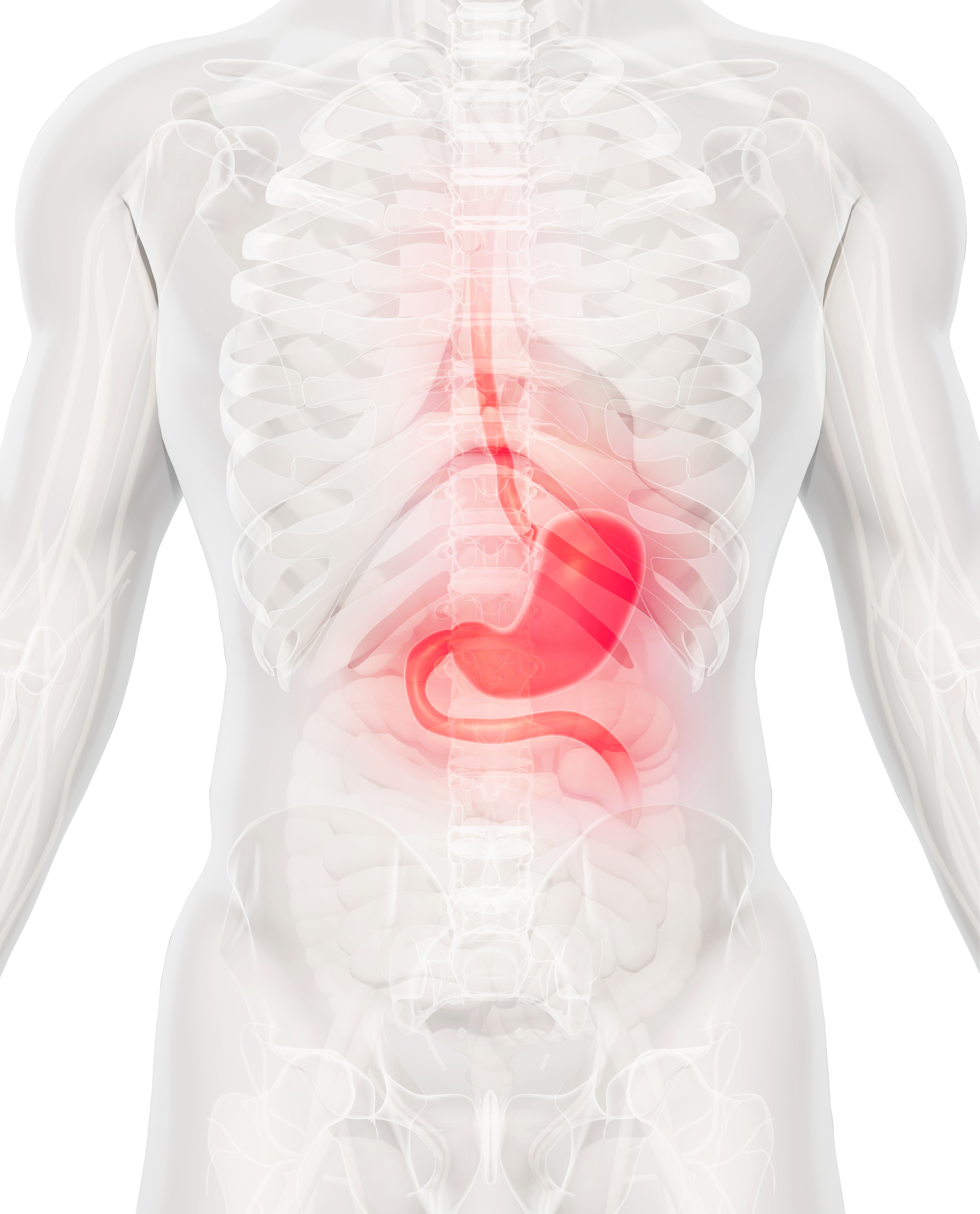Zanidatamab Displays Safety, Efficacy in HER2-Expressing Gastric Cancer
Antitumor activity was observed in patients with gastroesophageal adenocarcinoma treated with the combination regardless of chemotherapy type.
Efficacy data from the trial revealed that among patients with HER2-expressing gastroesophageal adenocarcinoma who received zanidatamab monotherapy and those who received zanidatamab plus single-agent chemotherapy, the confirmed objective response rates were 32.1% and 48.6% in the respective groups.

Zanidatamab-hrii (Ziihera) with or without chemotherapy displayed a manageable safety profile and favorable efficacy outcomes in heavily pretreated patients with HER2-expressing gastroesophageal adenocarcinoma (GEA), according to results from a dose-escalation and dose-expansion phase 1 trial (NCT02892123) published in Nature Communications.
Efficacy data from the trial revealed that among patients with HER2-expressing GEA who received zanidatamab monotherapy (n = 28) and those who received zanidatamab plus single-agent chemotherapy (n =37), the confirmed objective response rates (ORRs) were 32.1% (95% CI, 15.9%-52.4%) and 48.6% (95% CI, 31.9%-65.6%) in the respective groups. Two complete responses were observed among those treated with the combination regimen. Furthermore, the median duration of response (DOR) in the monotherapy and combination therapy arms was 6.7 months (95% CI, 1.9-11.1) vs 18.3 months (95% CI, 5.6-not evaluable [NE]).
In the respective groups, the Kaplan-Meier–estimated median progression-free survival (PFS) was 3.6 months (95% CI, 1.8-7.2) vs 7.3 months (95% CI, 5.4-11.5). Additionally, among patients treated with zanidatamab monotherapy, longer median PFS was observed in those with an immunohistochemistry (IHC) of 3+ vs those with an IHC of 2+ and who had fluorescence in situ hybridization–positive disease: 3.6 months (95% CI, 1.8-7.2) vs 1.8 months (95% CI, 1.2-7.7), respectively. A similar trend was observed in those who received chemotherapy: 7.7 months (95% CI, 5.4-NE) vs 5.4 months (95% CI, 0.1-20.1) in the respective subgroups.
“This phase 1 study evaluated the safety and efficacy of zanidatamab across multiple HER2-expressing cancers, with results of these cohorts reported previously. Here, we have focused specifically on the outcomes in patients with advanced unresectable or metastatic GEA,” lead investigator Funda Meric-Bernstam, MD, chair of the Department of Investigational Cancer Therapeutics, the Phase I Program of the Division of Cancer Medicine at The University of Texas MD Anderson Cancer Center, wrote in the publication with study coauthors. “[T]he favorable safety profile and antitumor activity of zanidatamab observed in this study of patients with HER2-expressing GEA provide further support that zanidatamab is well tolerated and has encouraging activity in patients with advanced, HER2-expressing tumors who have progressed after standard therapies, including HER2-targeted agents. These encouraging results support ongoing and future development of zanidatamab as a therapeutic option for patients with advanced GEA.”
Between September 1, 2016, and March 13, 2021, patients were assigned to receive either zanidatamab monotherapy (n = 29) or the agent in combination with chemotherapy (n = 41) in the 3-part study. Part 1 of the study was a standard 3+3 dose-escalation phase identifying the maximum tolerated dose, optimal biological dose, or recommended dose of zanidatamab. Parts 2 and 3 sought to characterize the safety, tolerability, and antitumor activity of zanidatamab, the former evaluating it as a monotherapy, and the latter as a combination therapy with single-agent chemotherapy.
In part 2, patients received either 10 mg/kg of weekly zanidatamab or 20 mg/kg of the agent biweekly. Part 3 consisted of 1 of the following regimens: 20 or 25 mg/kg of biweekly zanidatamab and 80 mg/m2 of weekly paclitaxel for the first 3 weeks of 4-week cycles; 20 mg/kg of biweekly zanidatamab and either 2000 mg of twice daily capecitabine for 7 days in weeks 1 and 3 of 4-week cycles or 1000 mg/m2 of twice daily capecitabine on days 1 to 14 of 21-day cycles; or 30 mg/kg of zanidatamab every 3 weeks plus 1000 mg/m2 of twice daily capecitabine on days 1 to 14 of 21-day cycles.
Among patients in the monotherapy and combination arms treated on study, the median age was 61.0 years (range, 24-86) vs 62.0 years (range, 25-80), 79.3% vs 78.0% were male, and 58.6% vs 68.3% were White. In the respective treatment groups, 93.1% vs 80.5% had an ECOG performance score of 1, 62.1% vs 53.7% had an initial diagnosis of gastric cancer, and 86.2% vs 82.9% had stage IV disease at diagnosis.
Additionally, the median number of prior systemic therapy lines in the respective groups was 2 (range, 0-7) vs 2 (range, 1-5), 37.9% vs 31.7% had received prior surgery, and 79.3% vs 48.8% had a HER2 status of IHC 3+. A total of 51.7% vs 24.4% received prior treatment with taxane-based therapy, and 93.1% vs 95.1% received prior treatment with HER2-targeted agents, including 93.1% vs 95.1% with trastuzumab (Herceptin).
The primary end point of parts 2 and 3 of the study was the characterization of zanidatamab’s safety and tolerability both as monotherapy and in combination with chemotherapy. Secondary end points included confirmed ORR, disease control rate, and PFS.
Safety data from the phase 1 trial revealed that at least 1 treatment-emergent adverse effect (TEAE) was reported in 97% of patients treated with zanidatamab monotherapy and 100% of patients with zanidatamab plus chemotherapy. Additionally, grade 3 or higher TEAEs occurred in 52% vs 78% of the respective arms.
Furthermore, treatment-related AEs (TRAEs) occurred in 69% of the monotherapy arm, 17% of whom experienced them at a severity of grade 3 or higher. Any-grade and grade 3 or higher TRAEs occurred in 98% and 51.2% of the combination arm.
The most common any-grade TRAEs in the monotherapy and combination arms, respectively, included diarrhea (41% vs 68%), fatigue (14% vs 44%), alopecia (3% vs 39%), and decreased appetite (0% vs 34%). The most common grade 3 or higher TRAEs included neutrophil count decreases (0% vs 15%), anemia (7% vs 12%), fatigue (7% vs 7%), and diarrhea (3% vs 7%). No grade 4 or 5 AEs occurred in the monotherapy arm, and no discontinuations occurred due to TRAEs in either arm.
Reference
Meric-Bernstam F, Rha SY, Hamilton E, et al. Zanidatamab monotherapy or combined with chemotherapy in HER2-expressing gastroesophageal adenocarcinoma: a phase 1 trial. Nat Commun. 2025;16:4293. doi:10.1038/s41467-025-59279-z